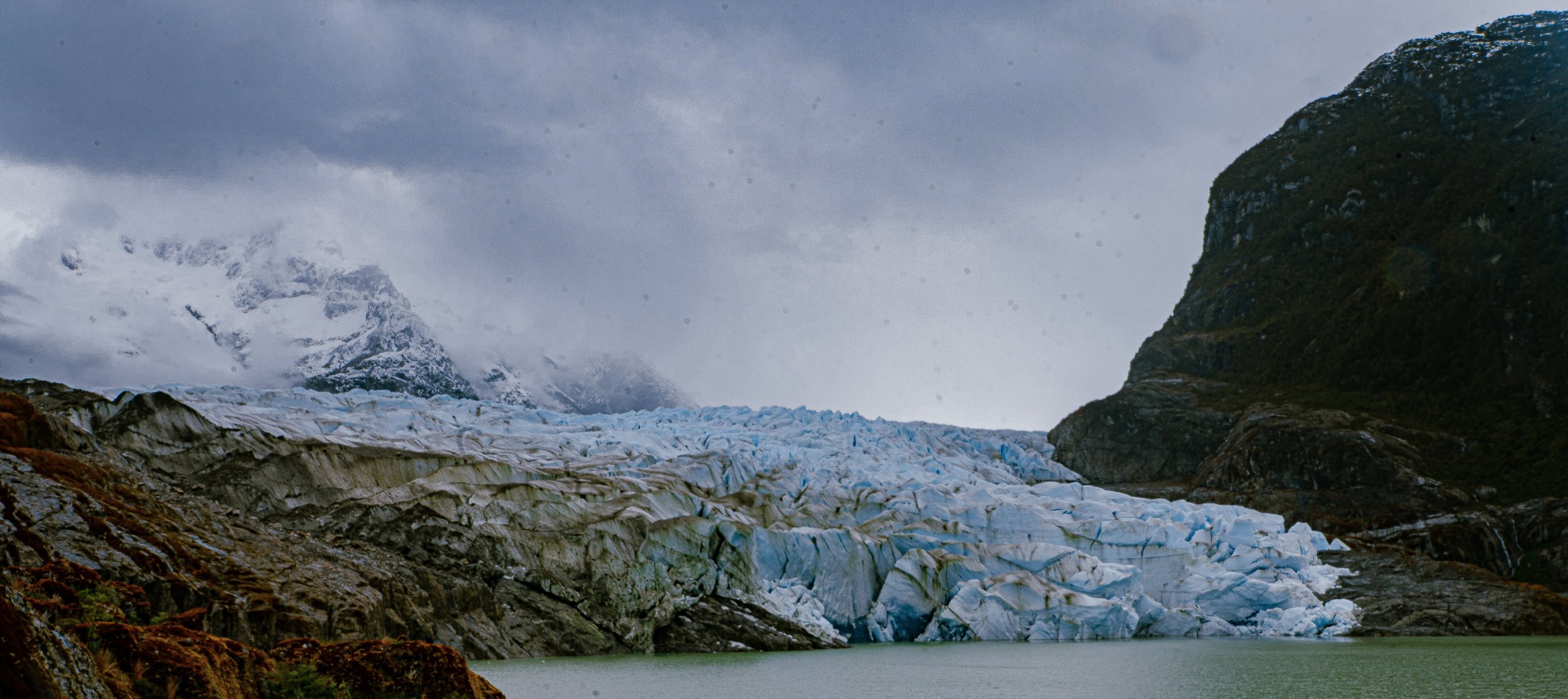Glacial Ecosystem
— GLACIAL ECOSYSTEMS —
Glacier systems are captivating environments that host diverse organisms in their surroundings and within their own layers (Stibal et al., 2020).
The supraglacial ecosystem is characterized by the prevalence of glacial algae and cylindrical cryoconite holes, which were formed by the melting of dark debris. These support complex communities comprising microorganisms like bacteria, archaea, algae, and fungi, along with various creatures such as rotifers, tardigrades, annelids, insects, and crustaceans.
Sunlight does not reach the subglacial ecosystem due to the thick glacier ice, but here too are a range of communities. Relying on chemical energy from the bedrock, the subglacial ecosystem consists of aquatic habitats like subglacial lakes and marine brine pools and house thousands of microbial taxa, as well as potentially thousands of species that are undiscovered due to the region’s isolation.
Glaciers also serve as crucial part-time habitats for alpine invertebrates, birds, and mammals, as they forage on other glacier species or wind-blown materials.
The biodiversity and metabolic activity occurring in glaciers are also linked to larger communities and act as key support for surrounding ecosystems.
From Mount San Lorenzo to continental Chiloé, glaciers within and outside of ice fields like in Patagonia, are experiencing alarming retreats and mass losses from climate change (Rivera et al., 2024).
The sensitivity of glaciers to changes in climate make them valuable markers of studying broad environmental shifts.
Glacier sensitivity varies across types of glaciers. Mountain glaciers, for example, are especially susceptible to small changes in temperature and precipitation, retreating and melting more readily. This becomes alarming as they constitute a large source of water supply for local communities.
Size is also a factor; larger glaciers have greater tolerance for changes in climate, whereas smaller glaciers face imminent threats.
Local conditions also affect glacial sensitivity to climate change as there are differences in impact on north-facing glaciers versus south-facing glaciers and higher elevation glaciers versus lower elevation. With greater slope and elevation, glacial movement is faster, and these glaciers become more susceptible to changes in climate.
With increased vulnerability of glaciers to melting causes drastic changes in water storage and availability. The increased freshwater input from glacial melt in Chilean Patagonia carries multifaceted implications, affecting water column stratification, phytoplankton growth, nutrient supply, and creating both fertilizing and light-limiting conditions in fjords.
Glacial retreat also leads to geological instability, triggering rock avalanches. Retreat is also linked to increased volcanic activity as deglaciation influences volcanic edifices.
From climate change resilience (CCR), Patagonia’s high elevations glaciers emerge as crucial climate refugia.
Manquehual-Cheuque and Somos-Valenzuela’s study in Patagonia found temperature and altitude to be primary influencers in CCR, whereas precipitation and slope carried more minimal roles (2021). Climate refugia were found in the South and Austral glaciological zones, as higher altitudes showed positive correlation with greater likelihood of tolerance of climate change. In the Northern Patagonian Icecap, the western side showed reduced likelihood of resilience. However, Manquehual-Cheuque and Somos-Valenzuela note that regions with lower likelihood of resilience should not be concluded as sites of complete glacial loss by 2050 or even 2070, as the responses of glaciers to climate change vary based on type.
Conserving glaciers poses significant challenges due to the expansive scope of these icy landscapes, although there have been legal efforts to do so. Chilean Patagonia's ecosystems benefit from protection in national parks and reserves, covering over 50% of the region between latitudes 41° and 56° S. However, they still face risks from climate change, tourism, farming, livestock, invasive species, and transportation infrastructure. In 2014, Argentina passed its law aimed at safeguarding glaciers and periglacial environments. Similar laws have been proposed and are being discussed in the Chilean parliament, to protect glaciers from mining and other natural resource extraction activities (Anacona et al., 2018).
— REFERENCES —
Manquehual-Cheuque, F and Somos-Valenzuela, M. 2021. Climate change refugia for glaciers in Patagonia. Anthropocene, 33. https://doi.org/10.1016/j.ancene.2020.100277
Anacona, P.I., Kinney, J., Schaefer, M., Harrison, H., Wilson, R., Segovia, A., Mazzorana, B., Guerra, F., Farías, D., Reynolds, J.M., and Glasser, N.F. 2018. Glacier protection laws: Potential conflicts in managing glacial hazards and adapting to climate change. Ambio, 47. https://doi.org/10.1007/s13280-018-1043-x
Rivera, A., Aravena, J.C., Urra, A., and Reid, B. 2024. Chilean Patagonian Glaciers and Environmental Change. Conservation in Chilean Patagonia, 19.
Stibal, M., Bradley, J.A., Edwards, A., Hotaling, S., Zawierucha, K., Rosvold, J., Lutz, S., Cameron, K.A., Mikucki, J.A., Kohler, T.J., Šabacká, M., and Alexandre M. Anesio. 2020. Glacial ecosystems are essential to understanding biodiversity responses to glacier retreat. Nature Ecology and Evolution, 4. https://doi.org/10.1038/s41559-020-1163-0


